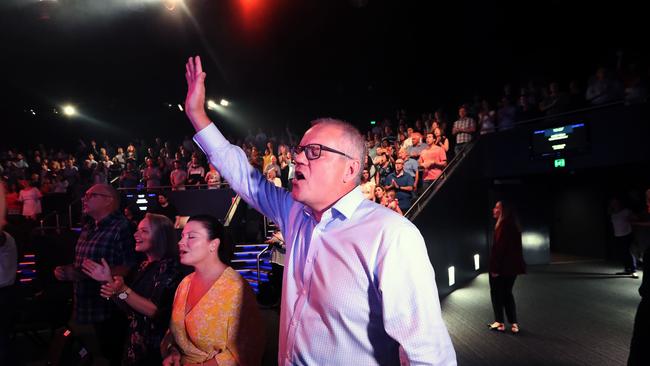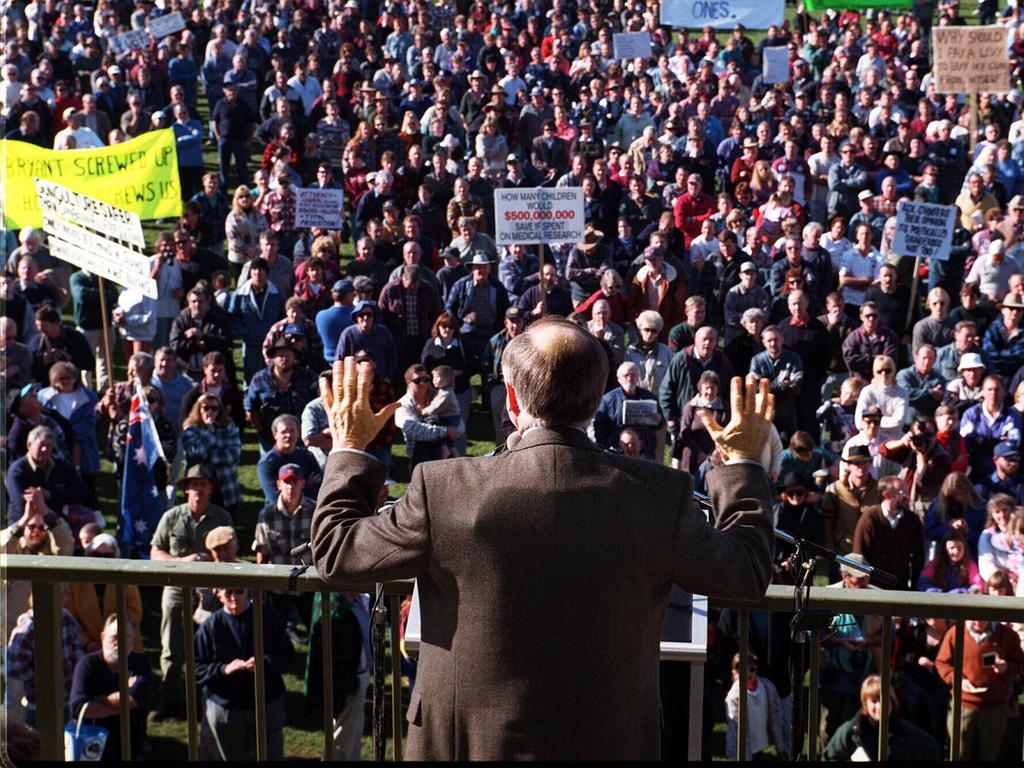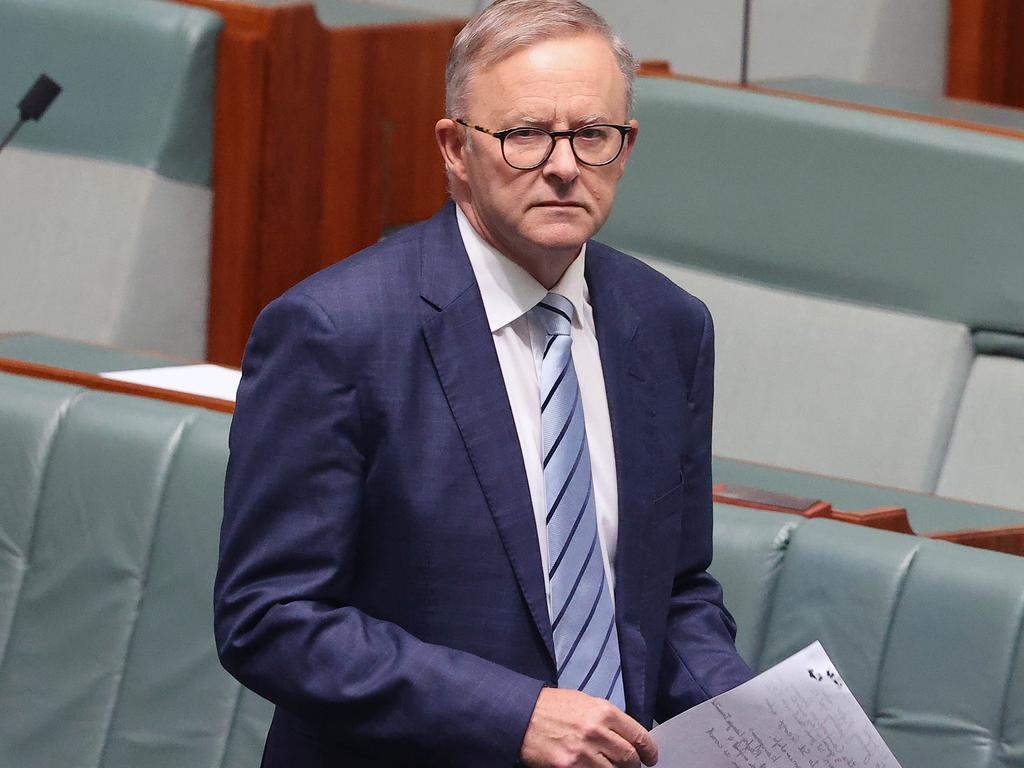Scott Morrison may still manifest his way out of this one
The fact that the Coalition is still in with a chance seems something of a miracle, even for nonbelievers.

Former prime minister Paul Keating was brought up a Catholic but it is not clear whether he believes in divine intervention. Yet there is uncanny similarity between Morrison’s triumph and Labor’s victory on March 13, 1993.
When Keating prevailed over the Coalition led by John Hewson that year, he found that all the leading journalists from the Canberra press gallery were not present at his victory speech. They were elsewhere in Sydney, waiting to hear from Hewson, whom they had expected would be the winner on the night.
It was much the same a quarter of a century later when the overwhelming view in the media was that Labor leader Bill Shorten would prevail over Morrison. It is a matter of record that all “the best and brightest” journalistic talent who lined up to appear on ABC television’s Insiders during and immediately after the 2019 election campaign got the outcome hopelessly wrong.
If there is a contemporary miracle under way it is that, according to the view of many informed commentators, the Morrison government is in with a chance to win again in 2022. Not a substantial chance but a prospect nevertheless.
Labor leader Anthony Albanese has performed very well in the lead-up to the election, so far at least. He has made Labor a small target by junking or moderating some of the unpopular policies his party took to the election in 2019. Moreover, Albanese has not made any significant mistakes.
However, the Coalition remains competitive despite the problems it faces. Right now, there does not appear to be the mood for change that prevailed on the three occasions since World War II when Labor defeated the Coalition from opposition – in 1972, 1983 and 2007 under the leadership of Gough Whitlam, Bob Hawke and Kevin Rudd respectively. Oppositions can attain narrow victories, but this has usually not been the case when it comes to elections for the House of Representatives. This may change.
Morrison is only the second Australian prime minister to lead a political party to the polls at a time of international pandemic, following Billy Hughes who led the Nationalist Party to victory in December 1919. That was difficult enough, but Morrison faces more problems than even Hughes did.
Morrison has the narrowest of majorities in the House of Representatives leading a party that – unlike Labor – allows parliamentarians to cross the floor without the penalty of expulsion. This was evident on Thursday morning when Katie Allen (Higgins), Bridget Archer (Bass), Fiona Martin (Reid), Dave Sharma (Wentworth) and Trent Zimmerman (North Sydney) crossed the floor and voted with Labor and some independents. Around the same time, Victorian Labor MP Kaushaliya Vaghela faced expulsion from the ALP for crossing the floor and supporting a motion opposed by the Victorian Labor government headed by Daniel Andrews.
In addition, Morrison does not have a majority in the Senate and is dependent on votes from minor parties to get legislation through the upper house – assuming that a significant number of Coalition senators will not get into crossing-the-floor mode.
That’s just for starters. Despite what some Morrison critics on the left and right maintain, the federal government has no control over the borders between states or over state health authorities and police forces. Nor does it run aged-care facilities the way states and territories run government hospitals. The federal government regulates aged-care facilities, that’s all. And states and territories have responsibility concerning health outcomes at government and private aged-care institutions.
The evidence suggests that the Morrison government’s handling of Covid-19 has been in accordance with various federal health authorities. Yet the Prime Minister has been blamed, at various times, for shortages of protective equipment, vaccines and testing kits. Despite this, Australia has among the highest vaccination rates in the world – which has contributed to one of the lowest rates of people who have died from, or with, Covid-19.
And then there is the media. Sure, the Coalition has some supporters in the media along with some reporters/commentators whose coverage has exhibited a professional disinterest. But the overwhelming view in the media is led by Morrison critics within the ABC, Guardian Australia, Network Ten’s The Project, The Saturday Paper, The New Daily – plus the Twitter mob and, to a lesser extent, Nine’s The Age and The Sydney Morning Herald.
It speaks volumes that Laura Tingle, who is perhaps the Prime Minister’s harshest journalist critic and has accused his government of “ideological bastardry”, holds the key dual roles of ABC 7.30 political correspondent and president of the National Press Club (which provides a platform for many a Morrison critic).
And then there are the right-of-centre groups that are opposed to the Coalition for various reasons. Primarily Clive Palmer’s United Australia Party and the Liberal Democrats, whose candidates include former Queensland LNP premier Campbell Newman and former Liberal Party operative John Ruddick, who is heading the party’s Senate ticket in NSW.
Ruddick recently tweeted that he is “50-50” divided as to whether the Liberal Democrats should preference the Coalition ahead of Labor. The Coalition’s problems also include a number of right-of-centre commentators in The Spectator Australia and Sky News who are far more critical of Morrison than Albanese. But there’s more. The emergence of well-funded independents contesting some previously safe Coalition (but not Labor or Greens) seats is a problem which former Liberal Party leaders like Tony Abbott and Malcolm Turnbull did not face. They identify as independents but some have previous Labor Party associations and all want to bring down the Coalition government.
Despite the strong performance on the economy by Josh Frydenberg and on national security by Peter Dutton, Morrison is beset with opponents and critics. The fact that the Coalition is still in with a chance seems something of a miracle, even for nonbelievers.
Gerard Henderson is executive director of the Sydney Institute. His Media Watch Dog blog can be found at theaustralian.com.au.






It’s almost three years since Scott Morrison stood in front of Coalition supporters and declared his belief in miracles – one manifestation of which was the victory that day of the Liberal Party and the Nationals in the election of May 18, 2019, which many predicted Labor would win.